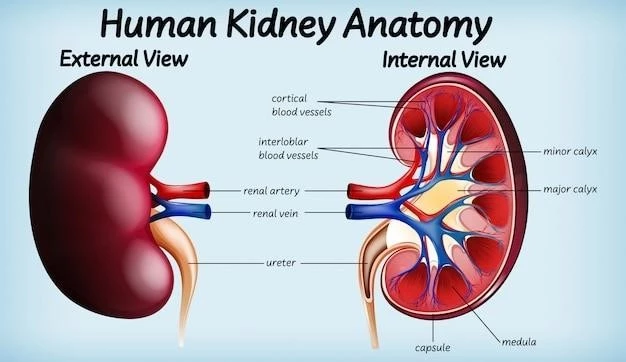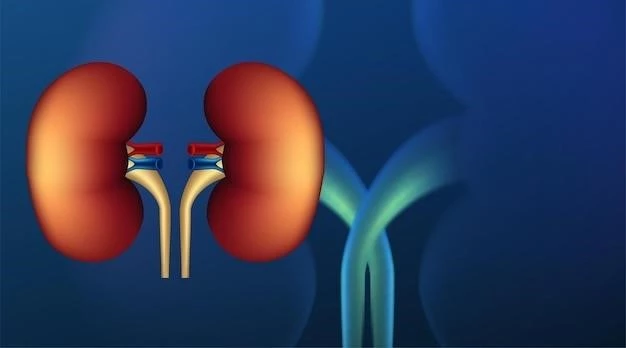Introduction to Renal Agenesis
Renal agenesis is a congenital kidney disorder where one or both kidneys don’t form in the womb․ It can be unilateral or bilateral, with various genetic and developmental factors involved․ Learn more about causes, symptoms, and treatments․
Definition and Overview
Renal agenesis is a congenital kidney disorder where one or both kidneys fail to develop before birth․ It can occur unilaterally (only affecting one kidney) or bilaterally (affecting both kidneys)․ The condition is linked to genetic mutations and developmental issues during embryogenesis․ Unilateral renal agenesis is more common than the bilateral form․ Understanding the causes, symptoms, diagnosis, and treatment options for renal agenesis is crucial in managing this condition effectively․
Causes of Renal Agenesis
Renal agenesis is primarily caused by genetic mutations and developmental issues during the formation of the kidneys in the womb․ Factors like mutations in specific genes can lead to the absence of one or both kidneys, resulting in this congenital condition․
Genetic Mutations
In cases of renal agenesis, genetic mutations have been identified as key factors in the development of this condition․ Mutations in specific genes such as RET, BMP4, FRAS1, FREM1, or UPK3A can contribute to unilateral renal agenesis, while mutations in genes like RET, FGF20, or ITGA8 may lead to bilateral renal agenesis․ Understanding these genetic influences is essential in comprehending the underlying causes of renal agenesis․
Developmental Factors
Renal agenesis is a condition that results from developmental issues during pregnancy, leading to the absence of one or both kidneys at birth․ The failure of the ureteric bud to fuse correctly with the metanephric blastema plays a critical role in the development of this congenital disorder․ Unilateral renal agenesis has been found to have a higher incidence compared to bilateral cases, with various genetic mutations contributing to these developmental abnormalities․

Types of Renal Agenesis
Renal agenesis can manifest as unilateral, affecting one kidney, or bilateral, where both kidneys are absent․ Unilateral cases are more common, while bilateral renal agenesis is rare but gravely impacts fetal development and survival․ Understanding the distinctions between these types is crucial for appropriate management․
Unilateral Renal Agenesis
In unilateral renal agenesis, a child is born missing one kidney․ The absent kidney is usually compensated for by the remaining kidney, allowing the child to live a full life․ However, careful monitoring and management are essential to ensure optimal kidney function and overall health․
Bilateral Renal Agenesis
Bilateral renal agenesis is a severe condition where both kidneys fail to develop before birth․ This absence of both kidneys is incompatible with life outside the womb due to the critical role the kidneys play in fetal development and the regulation of amniotic fluid․ The condition typically leads to pulmonary hypoplasia, resulting in severe respiratory insufficiency at birth․ Understanding the implications of bilateral renal agenesis is crucial in managing pregnancies and providing appropriate support and counseling to affected families․
Incidence and Statistics
Renal agenesis has an incidence of 1 in 1000 live births for unilateral cases and less common٫ occurring in 1 in 3000 to 4000 pregnancies for bilateral cases․ Understanding the frequency and impact of this condition is essential․
Frequency in Live Births
Renal agenesis has varying frequencies in live births; unilateral cases occur in about 1 in 1000 births, while the incidence of bilateral renal agenesis is lower, affecting approximately 1 in 3000 to 4000 pregnancies․ Understanding these statistics is crucial for managing and diagnosing this congenital kidney disorder․
Comparison of Unilateral and Bilateral Cases
Unilateral renal agenesis, affecting one kidney, occurs more frequently than bilateral renal agenesis, where both kidneys are absent․ The absence of one kidney can often be managed, while bilateral renal agenesis presents significant challenges due to its impact on fetal development and survival․ Understanding the differences between these two forms of renal agenesis is crucial for appropriate medical care and prognosis․
Symptoms and Complications
Renal agenesis can lead to symptoms like abdominal pain and hematuria, while complications may include abnormal kidney function and other urinary issues․ Understanding these manifestations is crucial in managing the condition effectively․
Abdominal Pain
Renal agenesis may manifest with symptoms like abdominal pain, which can result from various complications related to kidney function․ Understanding and addressing abdominal pain in individuals with renal agenesis is crucial in providing appropriate medical care and ensuring optimal health outcomes․
Hematuria, the presence of blood in the urine, can be a symptom of renal agenesis․ This manifestation may indicate underlying issues with kidney function or other complications․ Understanding the link between hematuria and renal agenesis is essential for proper diagnosis and management of the condition․

Diagnosis of Renal Agenesis
Renal agenesis is typically diagnosed through imaging studies that can identify the absence of one or both kidneys․ Fetal ultrasound is crucial in detecting this condition during pregnancy, allowing for appropriate medical planning and management․
Hematuria
Hematuria, the presence of blood in the urine, can be a symptom of renal agenesis․ This manifestation may indicate underlying issues with kidney function or other complications․ Understanding the link between hematuria and renal agenesis is essential for proper diagnosis and management of the condition․
Fetal Ultrasound
Fetal ultrasound plays a crucial role in diagnosing renal agenesis during pregnancy․ This imaging study can detect the absence of one or both kidneys in the developing fetus, allowing for early identification and appropriate medical planning․ Understanding the significance of fetal ultrasound in detecting renal agenesis is vital for ensuring the best possible outcomes for both the mother and the baby․
Treatment Options for Renal Agenesis
Renal agenesis treatment involves management strategies and potentially surgical interventions to address any complications and ensure optimal kidney function․ Understanding the available treatment options is vital in providing appropriate care for individuals with this congenital kidney disorder․
Management Strategies
Management strategies for renal agenesis focus on monitoring kidney function, addressing symptoms such as abdominal pain and hematuria, and ensuring overall well-being․ Additionally, counseling and support for individuals and families affected by this congenital kidney disorder are crucial aspects of the management process․
Potential Surgical Interventions
In cases of severe complications or associated anomalies, potential surgical interventions may be considered in individuals with renal agenesis․ Surgical procedures aimed at addressing specific issues or anomalies related to the condition can be crucial in improving the overall health and quality of life for those affected; Discussing the potential surgical options with healthcare providers is essential for developing a comprehensive treatment plan tailored to each individual’s needs․
Prognosis and Outlook
Renal agenesis prognosis varies depending on the type․ Unilateral cases may have a good outlook if the contralateral kidney functions well, while bilateral cases are incompatible with extrauterine life due to severe respiratory insufficiency at birth․ Understanding the prognosis is crucial in managing this condition effectively․
Factors Influencing Prognosis
The prognosis of renal agenesis is influenced by various factors such as the presence of complications, the type of agenesis (unilateral or bilateral), and the overall health of the individual․ In unilateral cases, the functioning of the remaining kidney plays a significant role in the prognosis, while bilateral renal agenesis is incompatible with extrauterine life due to severe respiratory insufficiency․ Understanding these factors is crucial in assessing the prognosis and providing appropriate care․
Long-Term Implications
The long-term implications of renal agenesis can vary, depending on the type of agenesis present and the overall health of the individual․ While unilateral cases may have a relatively good prognosis if the contralateral kidney is functioning well, bilateral renal agenesis is incompatible with life due to severe respiratory insufficiency at birth․ Understanding the long-term implications of this condition is crucial for providing appropriate care and support․
